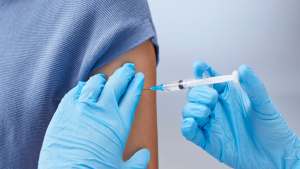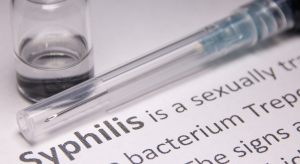
New Report Highlights Missed Opportunities for Congenital Syphilis Prevention
A new report from the Centers for Disease Control (CDC) shows that we’re missing opportunities to prevent congenital syphilis and save lives.

How are STIs transmitted? When should someone be tested? A national survey from the Ohio State University Wexner Medical Center finds many in the U.S. struggle when answering those questions.
The Centers for Disease Control and Prevention released their annual surveillance report on STIs earlier this year and the numbers are sobering: 1.6 million cases of chlamydia and nearly 650,000 cases of gonorrhea. The report also documented more than 207,000 cases of syphilis, an 80% increase since 2018; in the same interval rates of congenital syphilis (when the infection is passed to a fetus during pregnancy) jumped a staggering 183%.
There’s no simple answer to explain these numbers, but lack of awareness about how STIs are transmitted (and prevented) surely contributes. The Ohio State researchers surveyed 1,005 adults in the U.S. and found:
To explore these topics, ASHA spoke with Abigail Norris Turner, PhD, an infectious diseases epidemiologist and professor with the Ohio State University College of Public Health. Dr. Turner says the sharp uptick in syphilis infections is driven by many factors, including people’s perception of their risk: “Some people are surprised to learn that syphilis continues to circulate today – they associate it with a bygone era.”
She says current guidelines call for syphilis testing of all pregnant people at the first prenatal visit, but it wasn’t always that way: “For decades, screening guidelines varied by state. Providers used their clinical judgement to determine who needed a syphilis test during pregnancy. That led to missed opportunities for testing and thus also missed opportunities to avert congenital syphilis cases.”
Dr. Turner says stigma plays a role, too. “Most people don’t want to talk about their STI risk, and many are not open to messages encouraging them to get tested for STIs, even when they are symptomatic. If they do get a test and it comes back positive, it can be very hard to tell recent partners. Some people choose not to let their past partners know of their potential infection because of the stigma of having, and possibly transmitting, an STI. Stigma contributes to ongoing cycles of transmission and are part of the increased STI rates we see today.”
Shrinking budgets make it even more challenging to combat the current surge in STIs. “Reduced funding makes it harder for public health programs to get their messages of testing and treatment out to the community. Those messages were especially hard to deliver during COVID. Post-pandemic, people have largely returned to their pre-pandemic sexual lives, but the underlying prevalence of many STIs is higher now than in 2020. It’s critical that public health programs have the resources they need to continue testing and treating these infections.”

A new report from the Centers for Disease Control (CDC) shows that we’re missing opportunities to prevent congenital syphilis and save lives.

Explore ways to make sex safer and communicate with your sexual partners about your expectations and boundaries.

Currently, condoms are the only widely available, proven method for reducing transmission of HIV and other sexually transmitted infections (STIs) during sex. Condoms work.

There’s potential good news in gonorrhea prevention as a series of studies suggests that certain meningococcal B (MenB) vaccines can reduce the risk of gonorrhea.

Many people who take doxy PEP say it gives them peace of mind in their relationships and sex life. We sat down with Oscar Alexis, Efthimios, and Maxfield Haynes to talk about doxy PEP and get their perspective.

Cases of infants born with syphilis have soared in recent years. New CDC data reveal that more than 3,700 babies were born with syphilis in 2022—more than 10 times the number born in 2012.

Syphilis can be treated more easily if it is caught early. But undiagnosed and untreated syphilis can be dangerous. It can cause irreversible health damage and even death.

The number of babies born with syphilis in the United States is increasing at an alarming rate. There were over 10 times as many babies born with syphilis in 2022 than in 2012.
ASHA believes that all people have the right to the information and services that will help them to have optimum sexual health. We envision a time when stigma is no longer associated with sexual health and our nation is united in its belief that sexuality is a normal, healthy, and positive aspect of human life.
ABOUT
GET INVOLVED
ASHA WEBSITES
GET HELP
© 2025 American Sexual Health Association